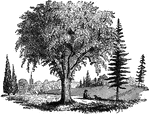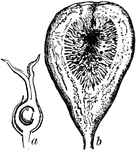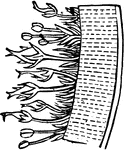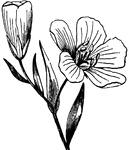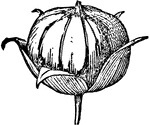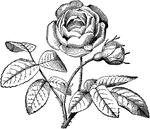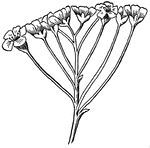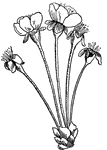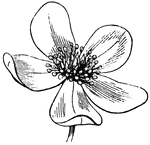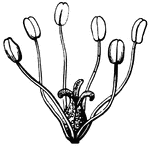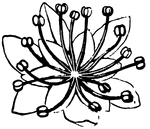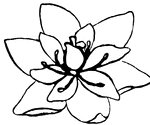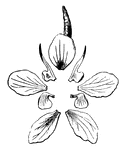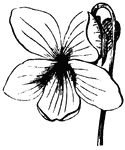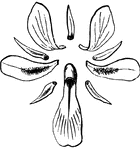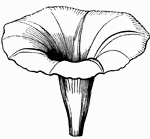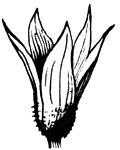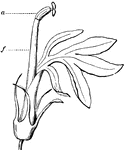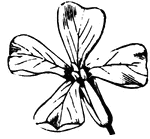
Fertilization (Flower)
This illustration shows fertilization of a flower, by means of pollen falling from stamens (male organ)…

Fiddle-Shaped Leaf
A leaf which has "the form of a fiddle or violin; pandurate or panduriform: applied in botany to an…
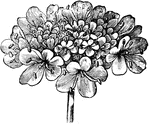
Inflorescence of Field Scabious
An illustration of the inflorescence of the field scabious. Knautia arvensis, commonly known as Field…

Ray-floret of Field Scabious
An illustration of a ray-floret of the field scabious. Knautia arvensis, commonly known as Field Scabious,…

Ray-floret of Field Scabious
An illustration of a ray-floret of the field scabious. Knautia arvensis, commonly known as Field Scabious,…

Seed of Field Scabious
An illustration of the seed of the field scabious. Knautia arvensis, commonly known as Field Scabious,…
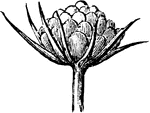
Young Inflorescence of Field Scabious
An illustration of the young inflorescence of the field scabious. Knautia arvensis, commonly known as…
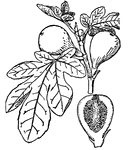
Fig
Any plant belonging to the genus Ficus is a fig. They are widely distributed in warm climates. Some…

Figwort
This illustration shows a Figwort, a member of the genus Scrophularia. It has the characteristic features…

Maryland Figwort
"The inflorescence of Maryland Figwort (Scrophularia Marylandica). a, the flower; b, the fruit; c, a…

Finger Flower
"Cheiranthera linearis; 2. its pistil and stamens; 3. a cross section of its ovary; 4. a seed of Pittosporum…

Balsam Fir Tree Cone
Abies Balsamea (Balsam Fir) or Balm of Gilead Fir, lvs. dark green and lustrous above, pale below, rounded…

Grand Fir Tree Cone
"A. grandis (Grand Fir) - Fig. 60.- tree, 200-300ft.: trunk becoming 4ft. in diam. lvs. thin and flexable,…
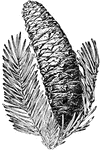
Silver Fir Tree Cone
"Picea, Silver Fir. Fig. 60. Tree, 100-200 ft: trunk 6-8 ft. in dia.: lvs. flat, distichously spreading,…
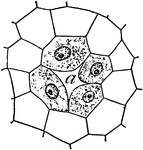
Resin gland of a fir
"Young resin gland of fir: a, duct, an intercellular space formed by the separation of the…
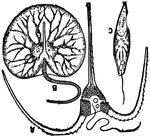
Flagellata
Flagellata is an order of Protozoa characterized by the presence of flagellae (whip-like structures…

Flax Pod Cut in Half
Section lengthwise of flax seed cut half away, bringing contained embryo into view.

Common Flax
Common Flax (Linum usitatissimum) is a flowering plant in the Linaceae family of flaxes.

Flax-seed
Section of a flax-seed magnified and divided flat-wise: turned round, so that the stem-end (caulicle)…
Flax-seed Cut Sideways
Section through a flax seed turned edgewise, showing the thickness of the cotyledons, and the minute…

Flocci and Spores
"1. Polyplocium inquinans, divided vertically, natural size; 2. flocci and spores; 3 and 4, the same…
